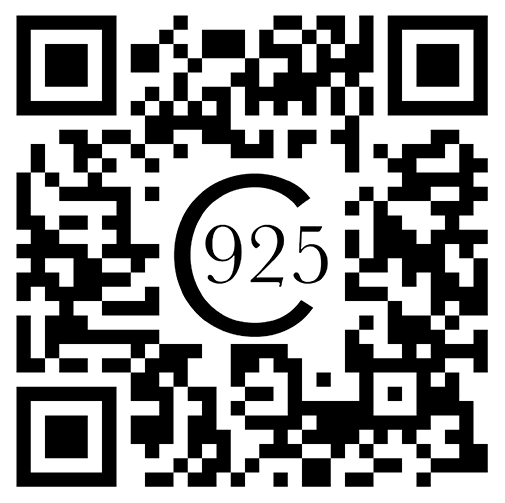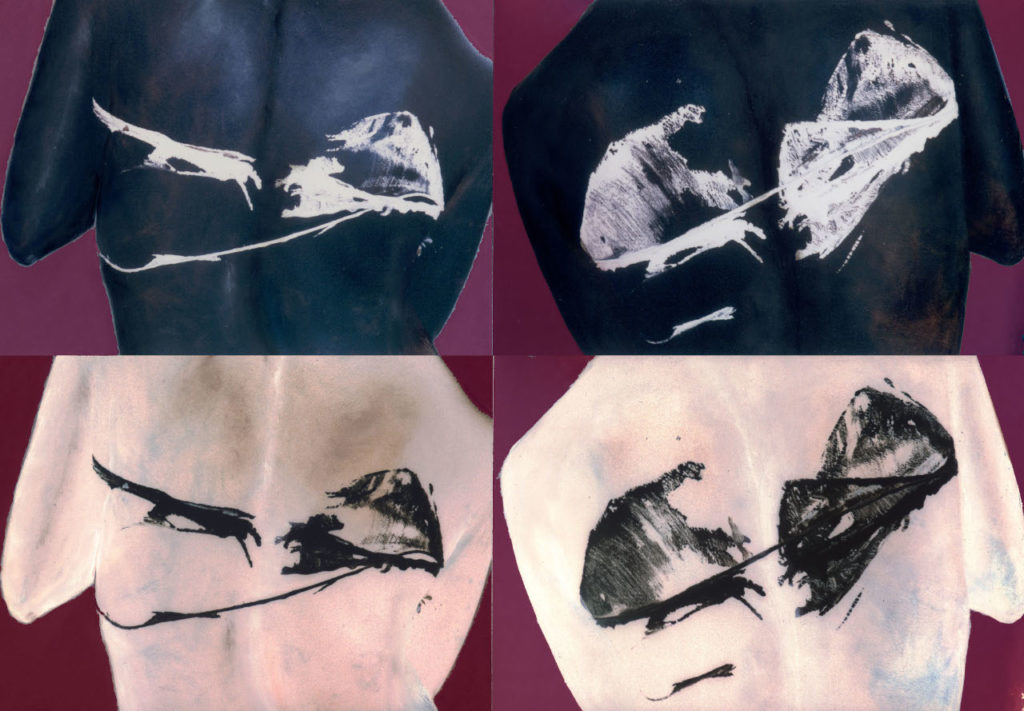Mom taught me well. She loved “people watching,” as she called it. During my childhood, when we were in a downtown crowd or sitting in a restaurant, she’d poke me and giggle, “Look at that man’s nose. It has a drop on the end. Oh, my God, it’s about to drip.” As we chuckled, we stared in suspense, waiting for the great event. And when it fell at last, we collapsed in hysterics. Or she’d point out someone’s unusual facial feature, such as long earlobes. “People are fascinating,” she’d gush over the earlobes. I always agreed and her habit lived on in me after she died.
During those days, I didn’t feel she criticized others. I developed an endless interest in people who I continued to observe, carrying on her tradition. I drew, painted and photographed close-ups of dancing feet, expressive hands and moving muscles. In an adventurous quest, I applied wet paint to someone’s back and asked them to move every way they could, and, like magic, an image of wings appeared. When I repeated this experiment with my ninety-year-old aunt, a twenty-nine year-old dancer and my ten-year-old son, the wings appeared over and over.
Like Mom, I stared at people while trying not to be creepy about it. In yoga classes, while we twisted into a pose, then held it, I memorized the way limbs crossed and skin creased. When I went home, I drew what I remembered, life-sized.
I once spent two weeks on a trip with a beautiful Scandinavian tour guide whose ski-jump nose was so perky, her nostrils flared out and up at the end, as if she’d suffered an over-the-top Michael Jackson-type plastic surgery. I loved looking at her spectacularly large up-turned nostrils and wished I could show them to Mom.
Recently traveling abroad in a large tour group, where the only name I could remember was a woman called “Kate,” it became important to survival to memorize unique characteristics of my group members. Luckily, I had years of experience doing that with Mom. Once, at jungle temples at My Son in Viet Nam, I stopped to take photos of dancing demons. I could never resist those types whether on temple walls or in real life.
After what seemed like a moment of staring through the lens, when I finished and looked around, the rushing guide and our group had disappeared. I scanned several groups, but didn’t find Mr. Orange, in a florescent embroidered t-shirt. I searched for Lizard Eye, a cold reptilian type who I had asked, at an airport where she sat outside the ladies’ room on a bench, if she could watch my carry-on bag while I used the facilities. With a flat stare, she’d emphatically replied, “No,” as if I’d insulted her. At that moment, with trails diverging in four different directions in the thick jungle foliage, I would have loved to see Lizard Eye.
I hadn’t been lost in a decade or more and I’d forgotten what encroaching panic felt like, as my stomach heaved upward, dangerously close to my mouth. None of the groups around me spoke English and we were a mile from our bus. I started down a path no one else was taking because my sense of direction told me this way led to the bus. But I questioned myself because no one else trod that trail. Beginning to sweat, I abruptly reversed course. Happily, a kind woman recognized my fright and, with broken English, asked me if I was okay. Clearly, with my rolling eyes and wide gestures, I was not. Bless her soul for taking pity on me. I practically slavered with gratitude. With stuttering speech, I described my bus and her nice guide pointed me down the lonely path.
I turned around again, trotting off by myself. If only I could see Mr. Beef, who I’d spotted on the deck of our ship one day on a lounge chair, splayed out in all his overweight, chunky speedo-clad glory, reading a magazine that blared its title in large red font, “BEEF.” Mom would have adored him. I would have welcomed Ms. Mole with her constant criticisms of all she surveyed. I wouldn’t have minded following slow Ms. Wide Beam through crowds, one tiny step at a time.
The jungle, with squawking birds and who knew what kind of slithering creatures lurking near me, proved to be a lonesome place. At the pace of my sweaty trot, I should have found my group by now. They, who traveled at the speed of the slowest cane-dependent members, clearly hadn’t taken this path. I placed all my faith in the guide who’d sent me this direction and I hoped it wasn’t his ideal of a joke to direct lost Americans into a pit of hell, payback to a former enemy.
I would hardly blame him.
But my faith proved well-placed. After a long half hour, I spotted the bus and, luckily, the group hadn’t arrived yet. I lived in dread of holding up our travels with a silly mistake. When they returned fifteen minutes later, none of them seemed to have missed me, including my guide. I said nothing, too embarrassed to admit I’d lost them. But I couldn’t help but give them all a
huge smile, even Lizard Eye.
In my gratitude, a dim thought entered. Categorizing or stereotyping someone by a single characteristic, the habit I’d picked up from Mom, might not be kind in all cases. For example, Lizard Eye probably wasn’t always forcing people to haul their roller bags into tiny Vietnamese toilet stalls, sometimes shared with a resident bullfrog. Possibly, she had other fine qualities.
Like most things in life, people watching had its pros and cons. I had best use my conscience to edit out mean streaks. I drew a deep breath and faced it; Ms. Lizard Eye, Ms. Mole and Ms. Wide Beam would have suffered from my sarcastic tongue if I’d said their names aloud. The yoga students I’d drawn, Mr. Orange and even Mr. Beef would pass my personal integrity test: I could say their names to their faces without embarrassing them or myself and enjoy guilt-free people watching.
Kaethe Kauffman’s one-person exhibit, La Foresta, is at Castello Gallery 780 in Venice, Italy, April 19 to June 23, 2024. Castello Gallery 780 is affiliated with the Venice Biennale art fair.

